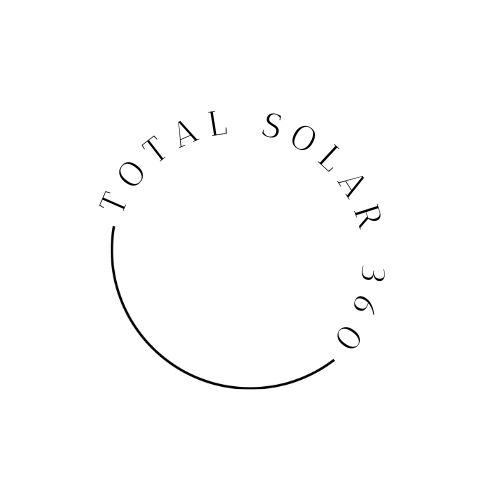News
Can solar thermal production in Spain be expanded by 10%?...with minimal investment.
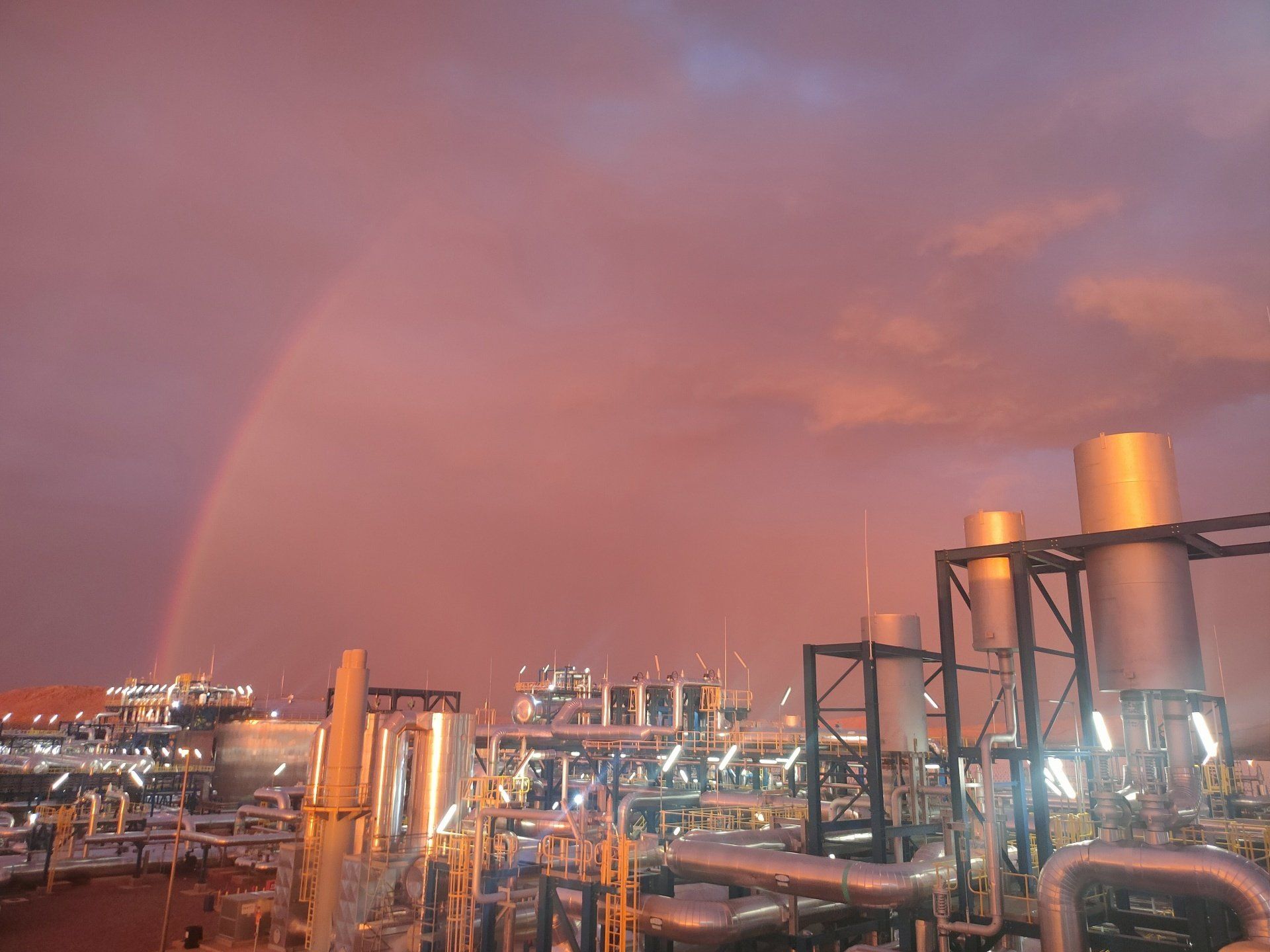
In March 2007, the first solar thermal plant in Spain was inaugurated. Seville witnessed the startup of one of the almost fifty plants that are currently operating in the country. In these 16 years there have been two clearly differentiated stages in the country, a first until 2014 of constant growth of this type of power plants, both in megawatts generated and in advance and improvement of technology. And another stage of stoppage due to the crisis and the change in policies in the environmental field led to a stoppage that lasts until now; At least the Spanish companies were able to export that experience and with more or less success they continued with the construction, exploitation, advice,... in other countries: Morocco, South Africa, Kuwait, Israel, .. among others have been the destination of these companies that little by little Little have they been being replaced, for now in construction, by Chinese companies. Between this year and 2024, 1,257 MW of solar thermal plants will be commissioned worldwide (many with some hybridization), none in Spain and with less and less participation by Spanish companies (the reason for all this deserves a separate debate). ), but at least some Spanish technicians continue to contribute their experience in foreign companies in the sector.
And in Spain?... little, or very little. The cheapening of photovoltaic technology and some political measures have stagnated this interesting technology in the country; Interesting because its storage capacity endows it with qualities in this sense that none of the current renewables can achieve.
In Spain there are about 50 solar thermal plants with a total generation capacity of almost 3 GW. Most of them are 50 MW plants, limited in their export, but not in their generation; the solar fields of these plants can capture much more energy than that required for their maximum production (at times of the year/day), the turbine/generator sets are limited by software-control, adaptable auxiliary services,... so technically most of These plants with small modifications could export more energy than the current one. And if we could increase the generation power, therefore the energy to be exported, by 10% in all the plants in Spain? around 230 MW more of renewable energy could be supplied with a minimal investment. This is equivalent to almost five 50 MW CSP plants, (A CCP CSP plant has a variable cost depending on its location, its exact configuration, equipment selection and power. On average, a CCP 50 MW CSP plant, the most common power of the plants installed in Spain, is around €4,500,000/MW for plants without thermal storage, and around 6,000,000 for plants capable of storing around 1000 MWh of thermal energy (about 7 hours, at full power). Source Renovetec). The benefit, not only economic, forces a careful study of this possibility that has two problems to overcome:
- Administrative impediment. If the plants are limited to 50 MWh of exported power, it is due to administrative limitation, due to the conditions to be met in the project application. Therefore, it is the central government (with the support of the regional government involved) that should apply an "exception" that allows this increase.
- Technical impediments. The limitations of each plant to increase its power, throughout the process, from the capture of solar energy in the field until it is exported and its distribution in the National Grid.
The benefits:
• Increased generation of renewable energy at almost no cost.
• The improvement of the amortization levels of the plants.
• Compensation of consumption in the "peak hours" of consumption, coinciding with the maximum generation.
• Lower electricity prices.
• …
.

La portuguesa Emiátomo, empresa puntera en la contratación de talento, busca cubrir varios perfiles técnicos para obras en Alemania. Electricistas, instrumentistas, mecánicos industriales y mecánicos ajustadores con experiencia en ciclos combinados Enviar CV actualizado a: marinela.borges@emiatomo.com nazaret.medel@emiatomo.com Adjuntar VCA al correo.

Operador/a (Temporal) en San Roque , Operador de Sala de Control para fábrica de cemento en Sagunto , Operario De Sala De Control en Segorbe , Operario/a sala de control y mantenimiento en Vizcaya , Operador/a de planta química en Burgos , Operador/a Centro de Control en Madrid , Operador/a de planta en Ferrol , Operador/a de Planta (Barcelona) , Control Room Operator, O&M en Sevilla , ...
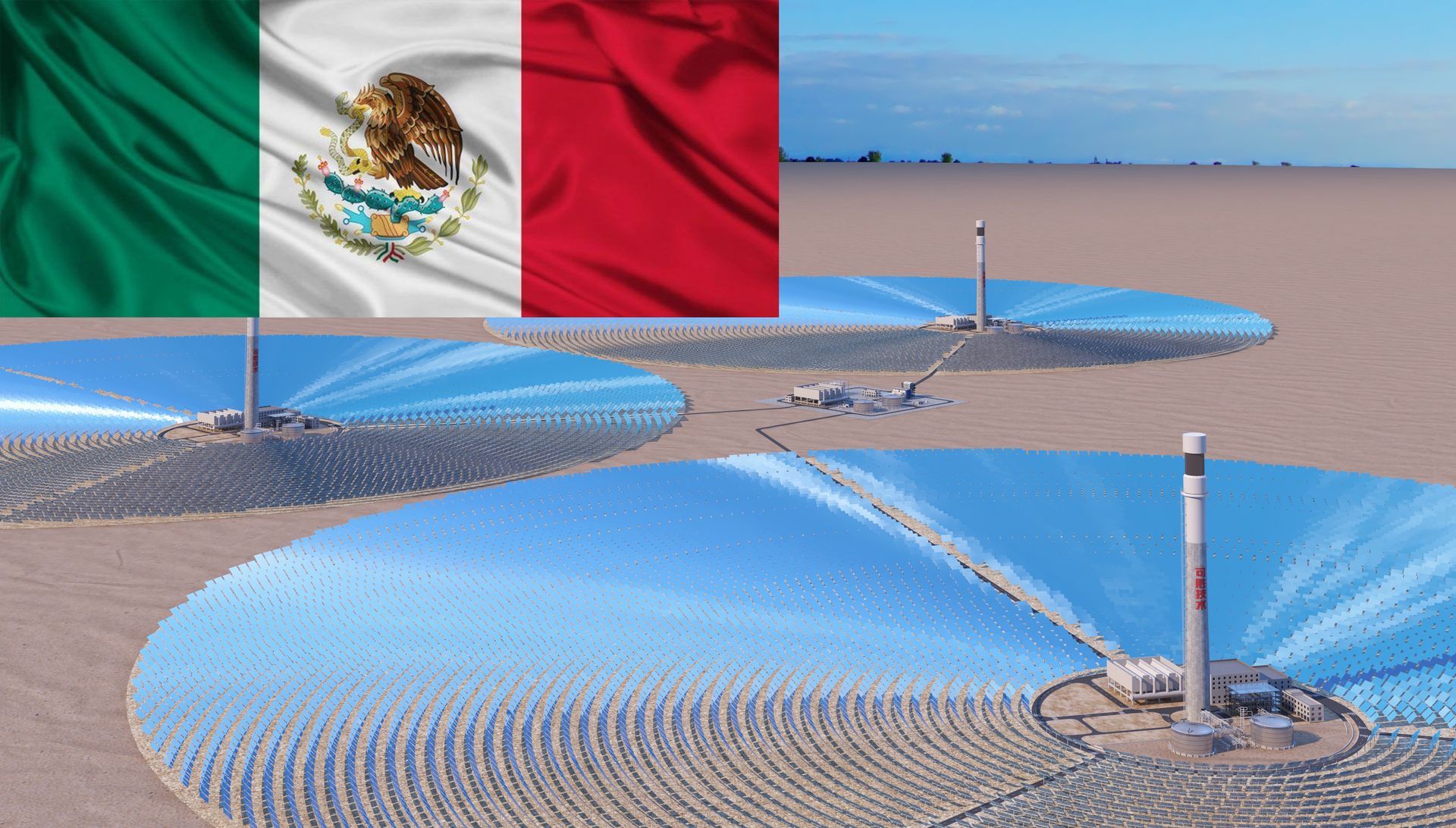
Fuente: Gobierno de México “Es algo muy importante para el país porque nos ponemos a la vanguardia de las energías renovables”, destacó la Presidenta de México, Claudia Sheinbaum Pardo La construcción de las dos centrales termosolares en Baja California Sur tendrán una inversión de 800 mdd El Gobierno de México, a través de la Secretaría de Energía y la Comisión Federal de Electricidad (CFE), anunció la construcción de dos centrales termosolares en Baja California Sur —las primeras en su tipo en el país—, con lo que se beneficiará a entre 100 mil y 200 mil hogares con una inversión de 800 millones de dólares (mdd), como parte del Plan de Fortalecimiento y Expansión del Sistema Eléctrico Nacional 2025-2030. La Presidenta Claudia Sheinbaum Pardo puntualizó que la construcción de estas dos centrales termosolares coloca a México a la vanguardia en energías renovables. “En la idea de que tenemos que ir impulsando cada vez más las energías renovables en nuestro país, se tomó la decisión de que en Baja California Sur haya una planta termosolar, que son plantas de generación eléctrica, que ya tienen algún tiempo, pero son pocas en el mundo. Y es algo muy importante para el país, porque nos ponemos a la vanguardia, también, de las energías renovables”, puntualizó en la conferencia matutina: “Las mañaneras del pueblo”. La secretaria de Energía, Luz Elena González, puntualizó que las dos centrales termosolares en Baja California Sur serán construidas por la CFE con el objetivo de reforzar el abasto eléctrico en la entidad, contribuyendo a la soberanía energética del país. Además, destacó que con esta acción se acelera el cumplimiento del compromiso de que el 35 por ciento de la generación eléctrica sea con fuentes renovables. El subsecretario de Planeación y Transición Energética de la Secretaría de Energía, Jorge Marcial Islas Samperio, detalló que dicha infraestructura permitirá incorporar energía solar con capacidad firme sin intermitencia, ya que contarán con Tecnología de potencia solar térmica de Torre central, cuyo uso es inédito en México para concentrar la energía solar en tanques de almacenamiento térmico y con ello producir electricidad incluso en las noches. Además, impulsarán la descarbonización del sector eléctrico al sustituir combustibles fósiles como el combustóleo, diésel y gas; se aprovecha el vasto recurso solar del país y además promueven la innovación, el desarrollo tecnológico nacional y nuevas cadenas de valor, ya que la idea es que en el futuro se produzcan diferentes componentes en el país. La directora general de la CFE, Emilia Calleja Alor, destacó que esta tecnología es la mejor para el aprovechamiento de la energía solar para producción de electricidad, además de que ayudará a atender la demanda que requiere Baja California Sur para los sectores turísticos y el crecimiento urbano e industrial y también le da mayor confiabilidad al sistema. Puntualizó que, en su primera etapa, las dos centrales termosolares producirán 100 megawatts (MW) a través de 11 horas de operación continua y su construcción tardará entre 36 y 48 meses..
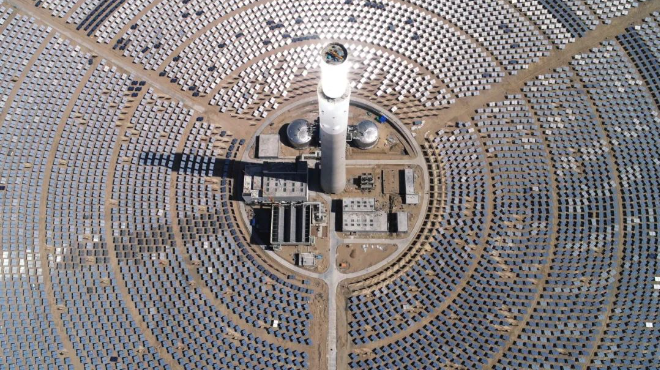
Antecedentes: En el segundo semestre de 2024, la provincia de Qinghai inició el proceso de selección para su "Proyecto Piloto de Demostración de CSP". Esta iniciativa busca aprovechar al máximo las ventajas de la generación de energía solar térmica, como su flexibilidad, compatibilidad con la red eléctrica y capacidad de despacho, para impulsar con fuerza su desarrollo a gran escala e independiente. Los tres proyectos seleccionados recibirán una tarifa de alimentación de 0,55 RMB/kWh. Cada proyecto tiene una capacidad de 350 MW y está equipado con un sistema de almacenamiento de energía térmica en sales fundidas de larga duración. Estos proyectos de demostración aprovecharán al máximo las capacidades de la generación de energía solar térmica para la regulación de picos de demanda, la regulación de frecuencia, etc., contribuyendo así al funcionamiento estable y eficiente del suministro de energía y electricidad de Qinghai. Además, la implementación de estos proyectos sentará una base sólida para el desarrollo a gran escala, económico e inteligente de la tecnología de generación de energía solar térmica en China. El proyecto de CSP de torre Qinghai Yichu Golmud de 350 MW (el «Proyecto») adjudicado a Cosin Solar es el mayor proyecto de energía termosolar de una sola unidad del mundo en términos de capacidad instalada, área de reflexión del campo de helióstatos, escala de almacenamiento de energía y generación de energía anual diseñada. El proyecto utilizará la tecnología de CSP de torre de sales fundidas con núcleo de desarrollo propio de Cosin Solar. Cosin Solar será responsable de la gestión integral del proceso, incluyendo la dirección del proyecto, el diseño general del proceso de la planta (excluyendo el bloque de potencia), el suministro de los equipos del sistema central, la puesta en marcha, la operación y el mantenimiento (O&M) y otros servicios técnicos. Cosin Solar inició la investigación de soluciones de sistemas y tecnologías y procesos clave relacionados para un proyecto de CSP de 350 MW en 2022. Para julio de 2024, la empresa había completado de forma independiente el diseño de la solución del sistema de la planta. Desarrolló con éxito los paquetes de procesos del Sistema de Colectores Solares de Concentración y del Sistema de Almacenamiento e Intercambio Térmico de Sales Fundidas, adecuados para un proyecto de CSP de 350 MW, alcanzando la profundidad básica de diseño. Esto proporciona una sólida garantía técnica para la correcta implementación del proyecto. Posteriormente, el instituto de diseño realizará el diseño de ingeniería basándose en esta base. Actualmente, el proyecto ha completado la preparación y revisión del informe del estudio de viabilidad, así como la licitación y la selección final del diseño de ingeniería. La construcción civil y la licitación de los equipos principales están en marcha. El inicio oficial de la construcción está previsto para septiembre de este año. Unit Capacity Leaps to 350MW Class with Multiple Major Technological Innovations The project adopts a "three-tower-one-unit" design scheme, configured with a 14-hour molten salt energy storage system. The total reflective area of the heliostat field is 3.3 million square meters. Facing the technical challenges of ultra-large-scale concentrating solar collector systems and Molten Salt Thermal Storage & Exchange System, Cosin Solar has innovatively developed multiple core Tower CSP technologies: Ultra-Large-Scale, Intelligent Concentrating Solar Collector System The Project's heliostat field control scale reaches 89,000 heliostats. It will utilize Cosin Solar's self-developed high-precision, intelligent concentrating solar collector system, including 37m² high-precision intelligent heliostats, ultra-large-scale heliostat field cluster control technology, multi-field energy coordination control technology, and high-capacity, safe, and efficient molten salt receiver technology. a. Heliostat and Field Control System Technology Upgrade The scale of the Project's heliostat field imposes higher requirements on heliostat surface shape accuracy and tracking precision. Cosin Solar's self-developed high-precision surface shape control technology, combined with a machine vision-based unattended fully automatic heliostat calibration system, enhances the tracking accuracy of the new-generation 37m² heliostat, effectively ensuring the concentrating efficiency of the Project's heliostat field. Additionally, this heliostat product exhibits excellent wind resistance, with maximum operating wind speed and survival wind speed further improved. Simultaneously, Cosin Solar has further optimized large-scale distributed communication networks and cluster control technologies, enabling intelligent detection, diagnosis, management, and real-time control of the entire heliostat field, meeting the needs of gigawatt-scale peak-shaving solar thermal units. b. High-Capacity, Safe, and Efficient Molten Salt Receiver Technology To address challenges such as long receiver preheating times under high wind speeds, Cosin Solar has developed an optimized molten salt piping design for the receiver system, a receiver header sealing technology adaptable to strong winds and ultra-low ambient temperatures, and an integrated insulation solution. These innovations ensure the safe and efficient operation of the receiver under extreme environmental conditions. High-Reliability, Distributed Multi-Tank Molten Salt Thermal Energy Storage System The Project's thermal storage capacity reaches 10.6 GWh, utilizing four sets of molten salt storage tanks with a total designed molten salt volume of 107,000 tons. Given the massive energy storage scale, high system complexity, and extremely high reliability requirements, Cosin Solar has developed a complete Molten Salt Thermal Storage & Exchange System process package and innovatively proposed a distributed molten salt energy storage system solution and a unique low-position tank short-shaft pump technical solution. a. Distributed Molten Salt Energy Storage System Solution Cosin Solar ha desarrollado una solución distribuida de almacenamiento de energía en sales fundidas para una planta termosolar de torre de gran capacidad, de una sola unidad y multitorre. Esta solución consiste en dispersar los sistemas de almacenamiento térmico de sales fundidas cerca del centro de cada campo de helióstatos y del bloque de potencia. Esto soluciona eficazmente los problemas asociados con el transporte de sales fundidas a larga distancia, como la lenta respuesta del sistema y los largos tiempos de arranque y parada. Además, optimiza la configuración del sistema de almacenamiento e intercambio térmico de sales fundidas y el esquema de transporte para el diseño de una sola unidad y multitorre, basándose en las características operativas de las plantas termosolares con sistema de reducción de picos, lo que reduce significativamente el coste de inversión en tuberías de sales fundidas a larga distancia. Esta tecnología ha sido patentada a nivel nacional e internacional. Ventajas: - Elimina el impacto del retraso del transporte de sales fundidas a larga distancia en el arranque del sistema receptor, lo que mejora la flexibilidad operativa. - Optimiza la configuración del sistema de almacenamiento e intercambio térmico de sales fundidas, lo que permite un despacho de energía más flexible y mejora la resiliencia del sistema. - Mediante la optimización de las tuberías de sales fundidas de larga distancia, el coste total del sistema de almacenamiento térmico se puede reducir aproximadamente en un 10 %. - Solución Técnica de Bomba de Eje Corto con Tanque de Posición Baja Para mejorar la fiabilidad operativa y la rentabilidad del Sistema de Almacenamiento e Intercambio Térmico de Sales Fundidas, Cosin Solar ha desarrollado de forma innovadora la solución de bomba de eje corto con tanque de posición baja. Al acortar la longitud del eje de la bomba de sales fundidas, se aumenta la fiabilidad de la bomba y se reducen los costes de operación y mantenimiento. Simultáneamente, se reduce la proporción de sales fundidas inutilizables («sales muertas»), lo que disminuye el uso de acero para los tanques y el volumen total de sales fundidas necesario. Esta tecnología ha sido patentada en China y en varios otros países y se ha aplicado con éxito en el proyecto de CSP de torre de 100 MW de Jinta Zhongguang. Ventajas: ü Reduce la dificultad de diseño y fabricación de las bombas de sales fundidas al acortar la longitud del eje. Aborda de forma fundamental los desafíos de las bombas de sales fundidas de eje largo, como los altos requisitos de la plataforma de cimentación y la susceptibilidad a las vibraciones, mejorando la fiabilidad de la bomba y la facilidad de mantenimiento. ü Soluciona eficazmente el problema del "nivel muerto de sales" en las soluciones convencionales. El nivel mínimo de líquido del tanque se reduce de aproximadamente 1 metro a menos de 0,5 metros. Esto reduce significativamente el uso de sales fundidas y el consumo de acero del tanque, manteniendo la misma capacidad de almacenamiento de energía. ü Con esta solución, el coste total del sistema de almacenamiento térmico puede reducirse hasta en un 12 % en comparación con los sistemas convencionales. Sistema de Operación Inteligente de Plantas CSP de Alta Inteligencia Las plantas CSP se enfrentan a desafíos como procesos operativos complejos, numerosos equipos, alta complejidad operativa, falta de profesionales cualificados, bajo nivel de inteligencia y dificultades en la evaluación del rendimiento operativo. La práctica operativa del primer grupo de proyectos de demostración de CSP muestra que, debido a la baja automatización de las plantas y la alta dependencia de las habilidades de los operadores, las tasas de generación de energía varían significativamente y las mejoras de rendimiento en la mayoría de los proyectos son lentas. Aprovechando la exitosa experiencia operativa del Proyecto de CSP de Torre Qinghai SUPCON SOLAR Delingha de 50 MW y su amplia experiencia en diseño, procesos, equipos y tecnologías de operación de plantas de CSP de Torre, Cosin Solar ha desarrollado una serie de soluciones innovadoras para abordar estos problemas: a. Plataforma de Entrenamiento de Simulación de Plantas de CSP La plataforma de entrenamiento de simulación, desarrollada por Cosin Solar, ofrece funciones integrales de simulación de equipos de planta y capacitación de operadores, brindando soporte completo para la capacitación del personal de operación y mantenimiento de plantas termosolares. Consta de un sistema de modelo de simulación, un software para la estación de entrenamiento y un software para la estación del instructor. - Modelado y Simulación Precisos: Permite la construcción libre de sistemas mediante la función de arrastrar y soltar visualmente. Convierte rápidamente los esquemas de diseño de sistemas en sistemas de simulación. Admite funciones como simulación meteorológica y simulación de datos de medición de temperatura infrarroja, logrando una simulación completa del estado de las plantas de CSP. - Entrenamiento Operativo Inmersivo: El software de la estación de entrenamiento utiliza la interfaz de control real para simular las operaciones diarias y diversos escenarios de condiciones climáticas anormales y fallas en los equipos. Ayuda a los operadores a familiarizarse con los procedimientos operativos y los planes de emergencia, mejorando rápidamente la capacidad operativa y de respuesta ante fallas. - Gestión Inteligente del Entrenamiento: El software de la estación del instructor controla el progreso y monitorea los datos en tiempo real. El sistema registra y analiza automáticamente los registros operativos de los participantes, generando informes de evaluación cuantitativos basados en múltiples dimensiones, como el cumplimiento de las especificaciones operativas, la velocidad de respuesta y la eficacia de la manipulación. Esto permite una evaluación precisa y orientación para la mejora. b. Sistema de Operación Inteligente para Sistemas de Captadores Solares de Concentración Para abordar dificultades como la alta nubosidad en plantas termosolares domésticas, las complejas condiciones de operación y la alta dificultad operativa, Cosin Solar ha desarrollado de forma independiente un Sistema de Operación Inteligente para el Sistema de Captadores Solares de Concentración. Este sistema puede identificar con precisión los cambios climáticos y cambiar automáticamente los modos de operación, lo que permite el arranque, la captación de calor y el drenaje de sales con un solo clic. El sistema integra datos multimodales para establecer un modelo operativo en tiempo real del Sistema de Captadores Solares de Concentración. Identifica inteligentemente las condiciones locales de sombreado por nubes y emplea una estrategia de control automático de coordinación de la energía del campo para lograr un despacho de energía preciso en condiciones nubladas, reduciendo el vertido de energía y maximizando el aprovechamiento energético del campo de helióstatos. La aplicación de este sistema reduce significativamente la dificultad operativa de la planta, mejora la fiabilidad operativa del sistema y aumenta la energía térmica captada. C. Plataforma de Gestión Inteligente para la Operación de Plantas CSP Cosin Solar ha desarrollado recientemente una Plataforma de Gestión Inteligente basada en servicios en la nube para la Operación de Plantas CSP. Mediante una plataforma de gestión digital inteligente, una plataforma de análisis de datos científicos y una plataforma de supervisión inteligente, aborda integralmente las dificultades para optimizar las operaciones de las plantas de CSP, brindando un sólido soporte a los usuarios en diferentes niveles: - Mejora de la eficiencia de la producción: Proporciona una plataforma de gestión digital inteligente que integra funciones como la gestión de informes diarios de operación, diagnóstico inteligente de equipos, pronóstico meteorológico y alerta de desastres, predicción de energía, etc., mejorando continuamente la eficiencia de la gestión de la planta. - Guía de optimización operativa: Proporciona una plataforma de análisis operativo que incluye análisis estadístico automático de datos operativos y análisis inteligente de las causas de las desviaciones del rendimiento de la planta. Esto ofrece una herramienta eficaz para optimizar continuamente la eficiencia de la planta y maximizar los ingresos. - Mejora de la supervisión del propietario: Proporciona una plataforma de supervisión inteligente que incluye paneles de monitoreo inteligentes locales y remotos. Esto ayuda a los grupos empresariales propietarios a comprender rápidamente el estado de la producción de primera línea, optimizar los procesos de toma de decisiones y mejorar la eficiencia de la gestión. A medida que el sistema eléctrico avanza rápidamente hacia la comercialización, lograr un desarrollo revolucionario en la industria de generación de energía termosolar requiere bajo costo y gran escala. Como el proyecto de energía termosolar de una sola unidad más grande del mundo, el Proyecto CSP Independiente de Qinghai de 350 MW acumulará experiencia crucial en tecnología, equipos, ingeniería y operación. Proporcionará una demostración integral del desarrollo de la industria de la CSP en China y a nivel mundial. Aprovechando su profunda experiencia en el campo de la CSP, Cosin Solar domina plenamente las capacidades clave para el diseño, la construcción y la operación y el mantenimiento de proyectos de CSP de gran capacidad, logrando innovación en tecnologías y sistemas clave. Comprometida con la implementación exitosa del Proyecto CSP de Qinghai de 350 MW, Cosin Solar busca acelerar el desarrollo a gran escala de la industria y la rápida reducción de costos, impulsándola hacia una nueva etapa de desarrollo de alta calidad.
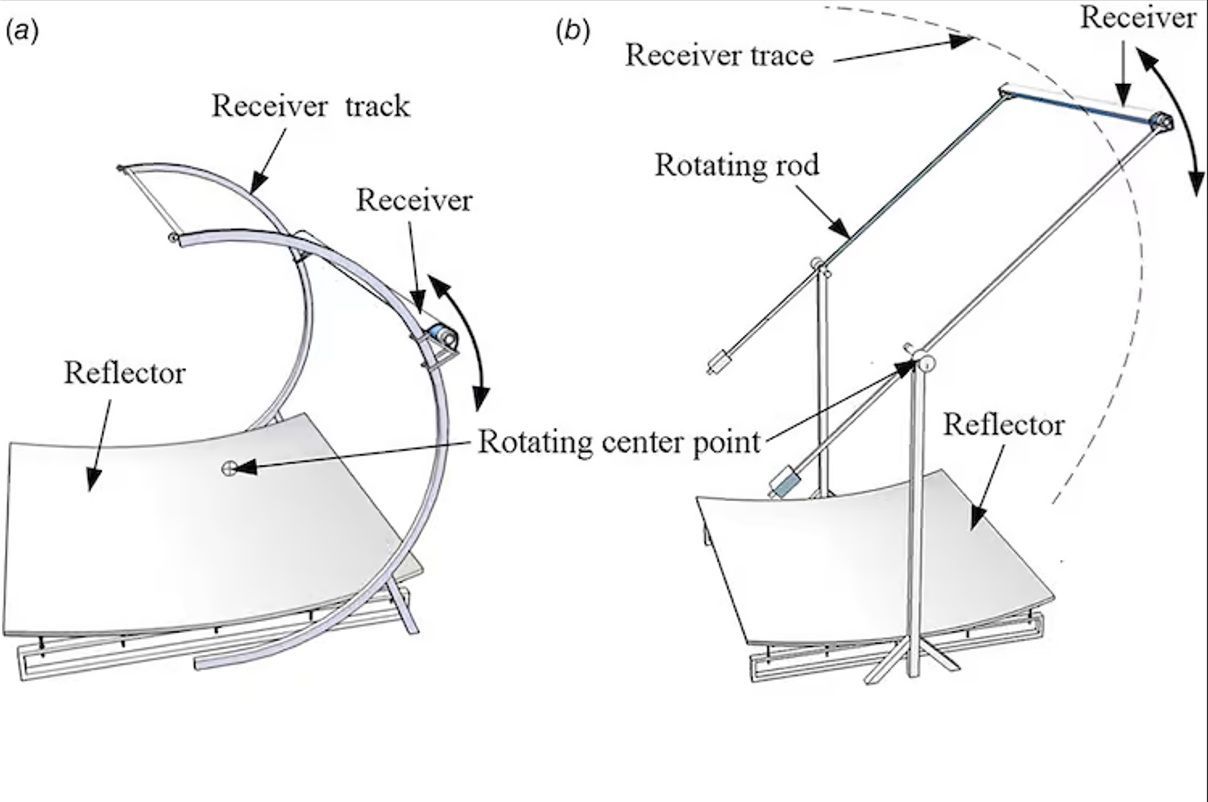
Fuente: SolarPaces.org Autor: Susan Kraemer Investigadores han desarrollado un método completamente diferente para que la CSP de canaletas recolecte energía solar. Normalmente, en esta forma de energía solar concentrada (CSP), largas hileras de enormes espejos parabólicos con forma de canaleta se mueven lentamente durante todo el día a medida que el sol cruza el cielo, para mantener el flujo solar reflejado concentrado en un tubo receptor estacionario en el punto focal de la parábola. Intercambio de componentes móviles Ahora, un equipo internacional de investigadores ha intercambiado los componentes estacionarios y móviles. El objetivo es reducir costos y la complejidad. Este nuevo enfoque también impactaría la CSP de Fresnel, cuyo desarrollo se está iniciando en China. En su propuesta, los grandes espejos parabólicos serían estacionarios. Y el receptor, un estrecho tubo absorbedor, sería la parte en movimiento. Una pequeña sección ligeramente curvada del espejo parabólico se colocaría a poca altura del suelo. Para adaptarse al cambio estacional del azimut, solo se ajustaría su ángulo. En su lugar, el receptor solar se movería en una trayectoria circular a medida que el sol se mueve por el cielo. Los equipos probaron varias maneras de mover la tubería. Cada una tenía sus ventajas. ¿Debería deslizarse por una curva personalizada o girar alrededor de un punto fijo? El deslizamiento resultó más ligero y, por lo tanto, podría ser más económico. Pero girarla proporcionaría mayor precisión y estabilidad. Reducción del uso del suelo Investigadores del Reino Unido, China y Finlandia colaboraron en este nuevo diseño para que la CSP de canaletas sea más económica, fácil de mantener y utilice menos tierra. Publicaron su artículo en junio en la revista Journal of Solar Energy Engineering: Diseño y principio de un novedoso concentrador solar lineal con reflector parabólico asimétrico y receptor móvil independiente. En una llamada desde el Reino Unido, el autor principal, Song Yang, explicó su razonamiento: por qué mover el delgado tubo absorbente en lugar del enorme espejo es tan importante. “En la configuración actual, separamos los grandes conjuntos de espejos parabólicos para que no proyecten sombras entre sí por la mañana y por la tarde”, explicó. “A veces, más del 30% de la luz solar se pierde simplemente por estos huecos. Se desperdicia mucho terreno, que no capta la luz solar. Pero podemos eliminar casi por completo la curvatura del espejo parabólico. Dejamos solo una pequeña sección prácticamente plana sobre el suelo, por lo que no hay sombra”. El equipo desarrolló un modelo matemático para predecir el rendimiento. Se centraron en el ángulo de desviación, es decir, el ángulo entre los rayos solares y el eje de la parábola. Sus simulaciones demostraron que los mejores resultados se obtienen cuando el reflector está alineado de este a oeste e inclinado respecto a la latitud local. En esta configuración, el ángulo de desviación se mantiene pequeño durante la mayor parte del año. Ángulos más pequeños resultan en una mejor concentración de la luz solar y una mayor eficiencia. Primer prototipo con parábola pequeña y receptor solar "Construimos este pequeño espejo como prototipo", afirmó. "La prueba muestra una muy buena concordancia con la simulación. Y podemos considerarla como una validación preliminar". Lo probaron con un reflector de espejo parabólico de 850 mm (33") y un tubo receptor de 60 mm (aproximadamente 2"). Demostraron que la eficiencia óptica del sistema se mantuvo por encima del 96 % y hasta el 99 % en las mejores condiciones. El nuevo sistema fija el reflector a lo largo de una línea este-oeste y lo inclina para que coincida con la latitud local. El receptor se mueve en una trayectoria circular para captar la luz solar enfocada a medida que el sol se desplaza por el cielo. El espejo es fijo. Así que no se necesita equipo pesado para mover los espejos. Cuando los espejos grandes tienen que moverse todo el día para seguir la luz del sol, se requieren más motores y más mantenimiento. Esto implica mayores costos. Al intercambiar el componente que se mueve, esta innovación reduce dichos costos. Además, se pueden ubicar las unidades más cerca, aprovechando al máximo el terreno disponible. El equipo espera obtener financiación para el siguiente paso, que consiste en examinar el flujo de calor y líquidos. En este paso, evaluarán su rendimiento en exteriores bajo la luz solar y verán si hay otras maneras de reducir costos.
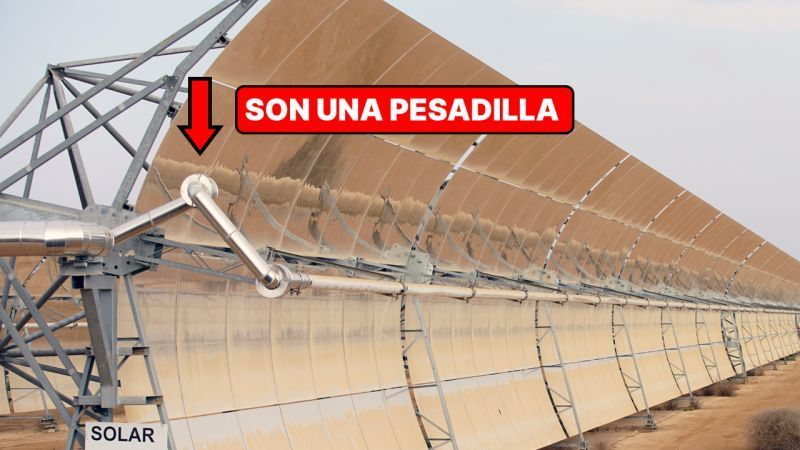
Magnífico artículo del divulgador Luís Ramos sobre estos conflictivos elementos de las plantas termosolares: "🔴 SON UNA PESADILLA. O el desafío perfecto para un estresista 😉 Quien haya trabajado en una planta termosolar de colectores cilindro-parabólicos lo habrá sufrido por sí mismo. Lo que aparece en la foto son rótulas (ball joints), que permiten que las tuberías sigan el movimiento del campo solar, como si de un brazo articulado se tratase. El más mínimo error de cálculo desemboca en: - Fugas del fluido térmico (HTF). - Agarrotamiento de la junta. - Lazo inoperativos. ....y un coste de mantenimiento que nadie quiere firmar 💀¿Dónde suele estar el problema? En no considerar correctamente las cargas límite de la rótula en el cálculo de estrés. Diseñamos las tuberías para dilatarse correctamente con la temperatura, pero no siempre prestamos atención a cómo las dilataciones afectan a la rótula, lo que provoca que trabajen más allá de su rango de movimiento. 💡 Mi consejo: Cuando modeles el sistema en software de estrés (AutoPIPE, etc.) (¡No calcules a mano sistemas críticos!), Recuerda esto: - Deja que la rótula trabaje con el rango de movimientos para el que se diseñó. - No le apliques cargas fuera de plano. - No le obligues a absorber dilataciones que puede asumir otro tramo. ¿Lo has sufrido alguna vez? ¿Algún truco que te funcionó en obra?". Luís sube a LinkedIn este contenido donde favorece la participación de los lectores, quienes nos aportan su experiencia en este tema : Buenas noches, soy técnico de mantenimiento mecánico en una termosolar, ese tema lo conozco perfectamente, hasta ahora creo que no hay solución debido al diseño (Pedro del Pozo). En nuestra planta de Termollano suponían un verdadero quebradero de cabeza. Heredamos años de mto incorrecto con reaprietes de BJ para evitar fugas de HTF que llevaba a constantes roturas por rigidez en tubos y articulaciones. Finalmente una campaña exhaustiva de revisión, suavizado y reapriete milimétrico a su par consiguió el objetivo. Fueron 8000 BJ aprox. en total. Una odisea con final feliz (David López). Amén con que es una pesadilla y desgraciadamente es el pan nuestro de cada dia. Hay varios grupos de trabajo especializados en termosolares sobre este tema especifico, pero a la verdad lo que mejor funciona, por el momento, es la anticipacion a las fallas (bloqueo de Bj, deformaciones plasticas, posibles poros/fisuras....) UN EQUIPO HUMANO CON UN BUEN OJO EXPERIMENTADO, y que permita anticipar el fallo catastrofico en los primeros sintomas.... Pero esta claro que si alguien tiene una tecnologia anticipatoria conocida y probada que lo comparta tambien en los comentarios, pues tema de drones no nos han dado buenos resultados, en el pasado...., pero la creacion de elementos y testigos adhoc es lo que tambien estamos testando con resultados prometedores para anticipar cualquier falla.... (Álvaro Martín).

Acerca del empleo TSK es una compañía global especializada en tecnologías innovadoras que contribuyen a un desarrollo más sostenible a nivel internacional, aportando soluciones para diferentes sectores de la industria. En este momento, TSK alcanza ventas cercanas a los 1.000 millones de euros, con más de 1.000 profesionales y proyectos ejecutados en más de 50 países. Desde el Departamento de Ingeniería de TSK Infraestructuras Eléctricas, deseamos seleccionar un/a Operador/a de sala de control y campo para trabajar en turnos rotativos de mañana/ tarde/ noche en las instalaciones del Estadio Santiago Bernabéu. RESPONSABILIDADES: Supervisión y monitoreo de parámetros agronómicos desde el BMS – SCADA. Rutas de chequeos de sistemas de operación: climatización, riego, aire comprimido, PCI, etc.. Realización de riegos de césped. Supervisión de los trabajos de extracción e introducción del césped retráctil del Estadio Santiago Bernabéu. REQUISITOS: Formación profesional de grado superior/ medio en Mecatrónica, Mantenimiento electrónico, Electricidad y electrónica, Robótica… Se valorarán conocimientos en variadores de frecuencia, sistemas electrónicos, PLC industriales, instalaciones eléctricas, instalaciones de comunicaciones y neumática, hidráulica, mecánica y climatización básicas. Recomendable: experiencia previa en un puesto similar. Aplicar

Javier Rubio (CEO - Chief Executive Officer at SOLCLEF) describe brevemente, en una conocida red social, el presente y futuro de la tecnología termosolar en el contexto actual. "Como parte de una compañía que opera 7 plantas termosolares en España, no puedo dejar de reafirmar el valor estratégico de esta tecnología en el sistema energético actual. La termosolar no solo genera energía limpia: genera estabilidad, firmeza y flexibilidad, tres pilares fundamentales para afrontar con garantías una transición energética basada en renovables. En nuestras plantas, lo vemos cada día: el almacenamiento térmico con sales fundidas nos permite producir electricidad durante la noche o en momentos críticos, desacoplando producción y radiación solar, y aportando respaldo real al sistema. En 2024, un 25% de la producción termosolar nacional fue nocturna. Eso es firmeza operativa. Pero su potencial va más allá de lo eléctrico. La termosolar está llamada a desempeñar un papel clave en la descarbonización de procesos industriales, allí donde la electrificación no es viable. Además, no olvidemos su impacto social positivo: estas plantas generan empleo técnico y cualificado en zonas rurales y con baja densidad de población, contribuyendo a fijar talento, revitalizar comunidades y dinamizar la economía local. Es momento de que el marco normativo y retributivo reconozca su valor diferencial. La termosolar no puede quedar relegada frente a tecnologías intermitentes sin capacidad de respaldo. Necesitamos un entorno que incentive la inversión y potencie su integración en un sistema energético cada vez más complejo. Seguiremos apostando por una tecnología que demuestra cada día que es mucho más que una fuente de energía: es una garantía para la seguridad, eficiencia y sostenibilidad del suministro".

¿Se enfrenta a problemas relacionados con el hidrógeno en los receptores de sus plantas solares? Comparemos dos enfoques posibles: 1. Reparación del receptor por inyección de argón ✅ Reduce las pérdidas de calor a corto plazo ⚠️ No restaura completamente el rendimiento ⚠️ No evita más fallos y pérdidas de producción a largo plazo 2. Eliminación de hidrógeno con hashtag#HyMATE ✅ Elimina el >95% del hidrógeno de HTF al instante ✅ Evita fallos en el receptor ✅ Reduce los costos de reparación y aumenta la rentabilidad de la planta ⚖️ Si bien la inyección de argón ofrece una solución rápida, pero solo a corto plazo, hashtag#HyMATE ofrece resultados sostenibles, rentables e inmediatos. Más información sobre hashtag#HyMATE: https://www.cspservices.de/wp-content/uploads/CSPS-HyMATE.pdf

Los responsables del proyecto se enorgullecen enormemente de compartir que Noor Energy 1 ha logrado oficialmente un récord mundial Guinness al operar una planta de energía solar concentrada (CSP) de forma continua durante 39 días y noches, la operación de CSP ininterrumpida más larga del mundo. Este hito histórico demuestra que la energía renovable ahora puede proporcionar una verdadera energía de carga base: constante, fiable y limpia. Es un momento clave no solo para este proyecto, sino también para la transición energética global. Todo el mérito es del dedicado equipo de NOMAC, cuya excelencia operativa, disciplina e innovación lo hicieron posible. Han establecido un nuevo referente mundial para la industria. ¡Brindemos por reescribir lo que es posible en energía limpia!




